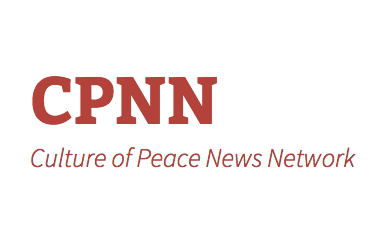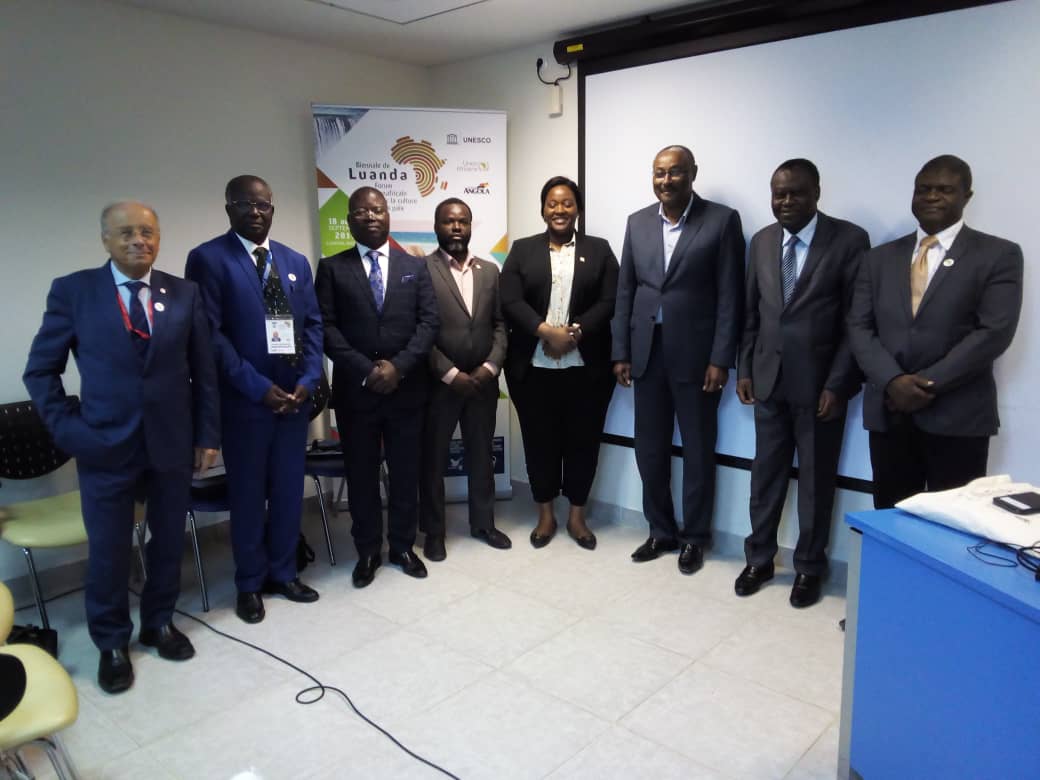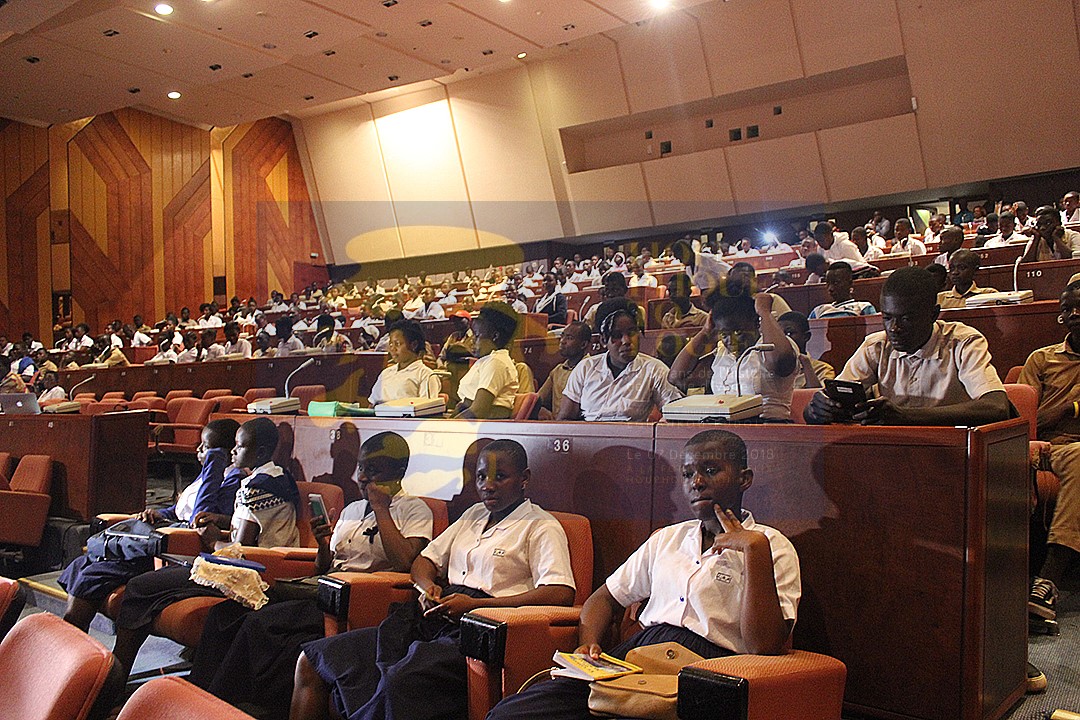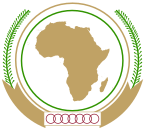-
Welcome to the
Network of Foundations and Research Institutions for the Promotion of a Culture of Peace in Africa
-
The Network's Meetings
News
CPNN (Culture of Peace News Network) bulletin of December 1, 2016
ELECTIONS- WHAT COMES NEXT ?
We’ve seen two shocking election results recently: the defeat of the referendum for the peace accords in Colombia, and the election of Donald Trump in the USA based on a racist and xenophobic campaign. What does it mean ?
It means that voters in the two countries are alienated from their governments – quite siimply, they do not trust the government. And they are angry.
So what comes next? Do we slide back into war or into fascism? Or do we return to the people, listen to their fears and anger, and organize them in the sense that Martin Luther King told us ?: "The supreme task is to organize and unite people so that their anger becomes a transforming force."
CPNN, this month, finds ample evidence that the fightback to defend peace and human rights is underway in both countries. It begins at the local level, as it must be if it is to be sustainable. And it is being led by young people, as it must be if it is to have the energy to succeed.
Already, there are plans for a massive march of women to take place in Washington on the day after the inauguration. We "will send a bold message to our new administration on their first day in office, and to the world that women’s rights are human rights. We stand together, recognizing that defending the most marginalized among us is defending all of us."
Thousands of students have staged walk-outs on college campuses across the United States, signalling their commitment to maintain "sanctuary campuses" to protect immigrant students. At the same time, the mayors of the largest American cities have pledged to maintain their policy of refusing to work with federal deportations These include Boston, Chicago, Los Angeles and New York. Not to mention entire states that are part of the sanctuary movement, including California and New York.
If you are out on the street talking to people, there is a new sense of urgency and commitment to get involved. "We’ve got a lot more work to do, now that Trump has been elected . . . more than ever, we need to work together for peace."
People, especially youth, are training in methods of nonviolence, realizing that they will be put to the test in the coming times. For example, in Tucson, Arizona, students are taking the Kingian Nonviolence training program, which aims to "institutionalize and internationalize nonviolence."
In Colombia, young people are training "to build capacities and to form 'Leaders animators' in the territory who can then promote a political culture of pardon and reconciliation." Also, there is the development of Municipal Peace Councils, the Municipal Councils of Transitional Justice . . . to form the network of peacebuilding strategy at the municipal level. "This month, CPNN articles about these initiatives come from the Colombian departments of Magdalena Centro, Cesar, Valle de Cauca and Antioquia, some of the most populous of Colombia’s 32 deparments."
Traditional peace and justice organizations, such as Search for Common Ground, Pace e Bene, Nonviolent Peaceforce and American Civil Liberties Union are deeply involved. But the energy is coming from young people to an extent that we have not seen since the revoluionary 60’s. It is they who will determine the direction and the power of the movement.
CPNN (Culture of Peace News Network) bulletin of November 1, 2016
RENEWABLE ENERGY ON THE MOVE !
Renewable sources of electricity overtook coal last year to become the largest source of installed capacity in the world, according to the International Energy Agency.
A recent graph is spectacular showing how the cost of solar energy has come down while the volume deployed has gone up. In 1975 a silicon solar energy module cost over $50 per watt, while now it is less than $1 per watt. The milliwatts installed have risen from 1 to 115,000 ! Since 2000 the deployment of solar has doubled seven times.
And the trend promises to continue. Dubai recently received a bid for solar installations that would produce electricity at 3 cents per kilowatt hour, four times less than the average price paid for residential electricity in the United States. And the Middle East is not alone. Projects with similar low rates are reported from Mexico and China.
Last year, for the first time, global investment in renewable energy surpassed investment in fossil fuels. This year’s graph shows $286 billion dollar investment in renewable energy (mostly solar panels and wind mills) compared to $130 billion for fossil fuels. Developing as well as developed countries are involved, including China (over $100 billion), India (over $10 billion), South Africa, Mexico, Chile, Morocco, Turkey and Uruguay (all over $1 billion).
To some extent the change is simply driven by the profit motive of investors. Presumably that is the case for the great investment by China. The Chinese are not only making the largest investment in the world (by far!) but they are advancing renewable energy in other regions besides their own, for example, in Latin America.
At the same time, sometimes the investment comes from small startup companies such as the Spanish Renewable Energy Cooperative.
Also the change is due to political decisions of investors. For example, Roman Catholic institutions around the world have recently decided to divest from fossil fuel extraction, joining a large list of religious institutions that have made the same decision.
In some cases, the political decision is national. Switzerland has just adopted a new law which phases out nuclear power and puts the emphasis on cutting energy consumption and increasing the production of renewable energy. The generation of non-hydro renewable power is to grow from 1.7 TWh last year to 11.4 TWh by 2035 (nearly tenfold).
Cities are also involved. This is especially important since, according to the International Renewable Energy Association, cities accounting for 65 per cent of global energy use and 70 per cent of man-made carbon emissions. In the United States, Boulder, Colorado, announced that the community will move to 100% renewable electricity by 2030, while Utah’s Park City has committed to to the same target by 2032. Meanwhile, Los Angeles’ City Council has directed its staff to develop a plan for 100% renewable energy.
There are some surprising technical advances involved in the shift to renewable energy. For example, the government of France has decided to invest in 1000 kilometers of autoroutes composed of solar panels!
Despite the fact that the climate accord negotiated by the Member States of the UN in Paris does not promise to solve the problem of global warming, the growing progress in renewable energy may ultimately solve much of the problem.
Antoinette Montaigne: “The Central African Republic needs quickly the Truth, Justice, Reparation, Reconciliation Commission to rebuild the Living Together.”
Antoinette Montaigne, Former Minister of National Reconciliation in the Central African Republic
Justice, national reconciliation in the Central African Republic, living together, secularism. These are themes that today are questioning the French, but they also concern many countries. The Central African Republic is hardly emerging from a period of near-civil war and, at the very least, anarchy. France intervened with Operation Sangaris and the international community with the device of the Minusca.
Antoinette Montaigne, former Central African Minister for National Reconciliation, today head of the Peace Academy, answers the questions of the International Opinion on the situation in the Central African Republic. Interview.
What is the situation of the Central African Republic from the point of view of communities and of living together ?
The Central African Republic is recovering slowly but surely from its wounds linked to a particularly violent crisis. Today, civil communities are relearning to live together, it is important to say. The crisis had created confusion between communities and armed groups. The process of reconciliation that I launched in 2014 addressed this issue, it was the key to the exit from the crisis. By communicating with each other, the communities realized that it was a political crisis, but wanted to associate a confessional coloring to create a curtain of smoke. The real reason for the crisis is the unbridled rush to power. Central African communities are responsible and tolerant. We have a national language, sango, spoken on all the territory and in the neighboring countries, is rare in Africa. We thus have an invaluable wealth which favors the rapprochement between the members of the different communities.
The country has now returned to constitutional order and efforts are being made in this direction. We must thank the international community, in particular the United Nations Mission for the Central African Republic, which was set up after the African Union mission, MISCA, which has done remarkable but diverse work to alleviate the passions that produces a lot of violence.
The country is on track but much remains to be done to ensure that the trauma suffered can be reduced. We must continue to fight against poverty, one of the aspects of the crisis was the loss of the looted heritage, ransacked. This population is now destitute of everything. Some have not yet been able to return to their homes, which have been destroyed, burned or looted. The cattle were sold, consumed. These people should be given socio-economic reparations so that people who have nothing left to live can get back on a good footing.
It is said that the Central African crisis was and still is a religious conflict. Is that the case ?
We have not had religious conflicts but bad governance and economic predation. The State has not been managed in the interests of the people, nor in the development of the country. There was great difficulty in taking into account the vital needs of the population, starting with education. The population regresses in education compared to post-independence generations. Today, in a so-called French-speaking country where all are supposed to write and speak French, few are really capable. We see a decline in enrollment. People speak a popular French, it can be considered that the literacy rate is below 50%. We are more in oral transmission than in school learning.
The crisis prevented students from graduating the diplomas of the years 2012/2013, 2013/2014, 2014/2015. These "white" years complicate the education system. Thus, it is no longer a question of catching up with all these exams over a year as had been envisaged but of putting things back flat.
Does the composition of the new power coming out of the polls meet confessional criteria ?
I can not tell you because I did not take part in setting up this government. I can tell you that all the communities are represented and that the Central African Republic is a secular country. It is important not to give much space to the denominational question. It is not because some wishing to gain power have used the confessional pretext that the state must do the same. Central African society would lose. Dignity, unity, work, our national motto, carries no religious pretext. It is not showing dignity or unity to see human beings through their religions. That will not bring anything to the nation.
What does national reconciliation mean in CAR ?
This involves several things. First, to note the failure of the so-called inclusive political dialogues that have never included big world except the political elite. The gravity of the crisis shows the failure of a Central African political elite. Moreover, to note the political and social impunity which forms the breeding ground of the access to the power by the violence, the politico-social violence and the collapse of the State. Finally, to note that this process of political bankruptcy has led to widespread violence against the backdrop of the collapse of the state and all institutions. Reconciliation in the Central African Republic is the realization of all these dimensions in order to provide a lasting response.
Thus, from January to August 2014, as Minister of National Reconciliation I proposed popular consultations at the grassroots level. They made it possible to visit all the Central African territory, in the 79 sub-prefectures close to the populations, despite the occupation of the territory by the armed groups, in order to consult all the Central Africans. This action was carried out in 2015 after the Brazzaville forum and before the Bangui forum. On 28 March 2014, on the occasion of the anniversary of the death of the founder of the Republic, Boganda, an international conference and Lydie Nzengou, a journalist, organized a conference in Bangui for national reconciliation. note]. The strategy of reconciliation that I had proposed in 2014 had been doubly validated by the forces of the nation and by the Political Bureau of the Secretary General of the United Nations Mr. Ban Ki-Moon does not stop at the national forum of Bangui . It is a strategy of reconciliation shared by the population of the Central African Republic as a whole. It can not be abandoned. The launch of the Commission-Truth-Justice-Reparation-Reconciliation must take place quickly.
Truth, for what has happened can not be forgotten and must be said. Repair, because those who have lost everything need a boost to start living again. Once these criteria are met, people will be more willing to make lasting reconciliation.
What is the process of reconciliation ?
Reconciliation allowed the return of constitutional order and the election of a new president on March 30, 2016. We have a new Constitution. The institutions required for the functioning of the country, provided for in the Constitution, must be set up within a period of twelve months. We are afraid that the State will not succeed because it is a bloodless state with limited means. Without a deep desire for reconciliation, it will be difficult but it is the priority of the Head of State.
Are France and the international community as a whole occupying too much or too little space in the Central African Republic ?
The presence of France in a French-speaking country is not specific to the Central African Republic.
The international community comes in solidarity on behalf of the United Nations in troubled countries. It's like a doctor, it's up to you to tell him where you hurt. From my point of view, there is nothing particular to reproach the international community. Perhaps the Central Africans did not know how to grasp the hand that was being handed to them.
You go to Beirut soon, why ?
I was invited to the congress of the International Association of Francophone Mayors (AIMF), whose theme is "Building the Cities of Living Together", where I will present a paper. I know the AIMF well because they were concerned about the situation in 2014 in the Central African Republic.
In France, our motto is "freedom, equality, fraternity". You live in Bussy-Saint-Georges (77). What do you think of the climate in France ?
France needs fraternity which is the other name of living together, it is the act by which one does not reject the other but one extends the hand to him to discover and to share with him. The question of living together in France is not mishandled only by the attacks, it comes from very far. Remember the March of Beurs for equality, there was already a problem of fraternity, just like the riots of the suburbs in 2005. All these accumulated problems have created an evil being of French society and this since the 1990s. We did not pay enough attention to what happened.
I have worked on these issues for a long time, as a representative of the Ombudsman for 11 years. I was a professional in the protection of youth. I managed the 2005 riots in Seine-Saint-Denis, at the Minor Prosecutor's Office as head of the judicial and educational support center. It was a difficult time but the justice professionals were of high quality and we were able to extinguish the fire by calming it. However, we regret not having taken the measure of the riots of 2005. These events were heralds of what is happening today.
Minister, what are you doing today ?
I am a consultant on the issues of living together. With the crisis in my country, I became aware of the dangerous rise of all kinds of prejudice and intolerance. As Minister of Reconciliation, I realized that it takes little to make societies switch. I hope that Central Africa, an area disturbed by all types of conflicts, can be part of the process of living together.
I have launched a Peace Academy in the Central African Republic, but it is my ambition to go to other countries to talk about peace education. I am working in particular with the Network of the African Peace Education Initiative launched by the Pan-African Center for Social Prospects (CPPS) of the Institut Albert Tévoédjrè. We will organize classes of peace in the Central African Republic. We want pupils to be the nursery of peace tomorrow in the Central African Republic and in Africa.
CPNN (Culture of Peace News Network) bulletin of September 1, 2016
CITIES ONCE AGAIN
Once again this month, we find cities in the lead for the various componens of a culture of peace, including sustainable development, tolerance and solidarity, democratic participation, peace activism and disarmament.
Before going into detail, we should celebrate the formal signing of the peace accord for Colombia, which has been under negotiation for several years and which has been followed, step-by-step, by CPNN, as well as the progress towards a peace accord to end 47 years of war between the government of the Philippines and the communist movement National Democratic Front.
The city council of Rennes, France, has voted unanimously to endorse a project working towards food sovereignty. This is the second city of France to take such an approach, the first having been the city of Albi. The project involves a partnership with the NGO "Incredible Edibles." In presenting the project, Councilman Theurier stated, "The approach of Incredible Edible can offer spaces to garden for residents, can strengthen social ties, and promote the greening of the city. It offers free food and promotes the development of urban agriculture and therefore food autonomy of cities. Above all, it can educate for the protection of the environment and recreate the link between people in city and those in food production areas. As the urban population continues to grow, issues related to agriculture – including the preservation of the land – are less tangibly perceived by many of our fellow citizens. Recreating this link is a necessity for the future."
The Mayor of Madrid, Spain, argues that cities can overcome the formal frameworks that keep nation states from resolving key issues. Madrid, for example, has negotiated its own accord with the United Nations to welcome refugees. It has instituted participatory budgeting which can help to end democratic apathy. And as we have noted earlier, Madrid’s response to terrorism is to promote a pro-peace education. As the mayor says, “It starts at school. We want children to learn the value of dialogue and mediation, and for them to learn to solve their own problems among themselves.”
The Culture of Peace Commission of Ashland, Oregon (USA) continues to show the way for promoting peace at the level of the city. It has established a "Community Peacebuilders Network" which lists "all of those local groups and individuals, from all sectors of our community, that have already decided to join us." The Commision plans to hold periodic conferences "encouraging collaborative solutions as we work toward our goal of creating an interconnected web of peace, justice, sustainability and inclusion in our local area."
The newest city peace commission is that of Santos, Brazil. The commission supports the Mayors for Peace Network, as well as activities of civil society, such as the "Paz na ponta do Giz" project of ABrasOFFA that promotes the concepts of peace within schools. A key role of the commission is to make the subject of PEACE a priority on the agendas of all leaders of the city (whether formal, such as the mayor and city representatives, or informal such as leaders that influence citizens’ decisions).
Finally, the UCLG (United Cities and Local Governments) have announced the five finalists for the City Peace Prize which will be awarded during their annual conference to be held in Bogota, Colombia in October. Appropriately (given the signing of the peace accords), two of the cities are in Colombia: Palmira and Cali. Palmira uses a music competition to promote peace, while Cali is training community peace workers. The other cities are Canoas, Brazil, which has established "peace territories,", Shabunda, DRC Congo, which has created "Permanent Peace Committees", and Kauwagan, Philippines, for their programme "From Arms to Farms" for the demobilization of former rebel soldiers.
The Network Meetings

Links
FESA-UNESCO International Conference, December 12-13, 2016, Luena, Angola
Third Meeting of the Network September 11-12, 2015 in Soyo, Angola
Second Meeting of the Network, from September 21 to 24, 2014 in Yamoussoukro, Côte d'Ivoire
Network Creation Meeting on September 20, 2013 in Addis Ababa, Ethiopia
Text Resources
- Call for Papers HARIS 2 JUNE 2021
- Report of the 5th Meeting of Members of the Network held on 21 September 2019 in Angola on the sidelines of the Luanda 2019 Biennale for the Culture of Peace
- Activity Report 2019
- Program of the Luanda Biennale
- DRC the six-day war in Kisangani
- Insecurity in the Masisi in Eastern DR Congo
- General Report of the Houphouet Boigny Foundation International Conference, October 20, 2018
- RAPPORT FINAL DE LA CONFERENCE FESA-UNESCO SUR LE THEME "PREVENTION DES VIOLENCES ET PROMOTION DE LA CULTURE DE LA PAIX EN PERIODE ELECTORALE EN AFRIQUE" LES 12 ET 13 DECEMBRE 2016 A LUENA EN ANGOLA
- BULLETIN DE L’UNION AFRICAINE (UA) ET DE LA CORNE DE L’AFRIQUE (HOA) du 1er juin au 31 Août 2017
- LES STATUTS DU RÉSEAU
- RAPPORT D'ACTIVITÉS 2014 - 2015 DU RÉSEAU
- RAPPORT D'ACTIVITÉS 2015 - 2016 DU RÉSEAU
Welcoming Remarks
You are welcome to visit the website of the Network of Foundations and Research Institutions for the Promotion of a Culture of Peace in Africa.
The Network was created at the end of the Addis Ababa meeting on September 20 and 21, 2013 with a view to "creating a continental and sustainable peace movement capable of mobilizing African States, the private sector, African artists and leaders, international organizations and regional development actors as well as NGOs and grassroots associations". It is currently composed of 44 African and non-African organizations listed here.
You will find on our website articles, publications, photos and videos concerning the promotion of the Culture of Peace on the African continent. We also keep you informed about upcoming events.






